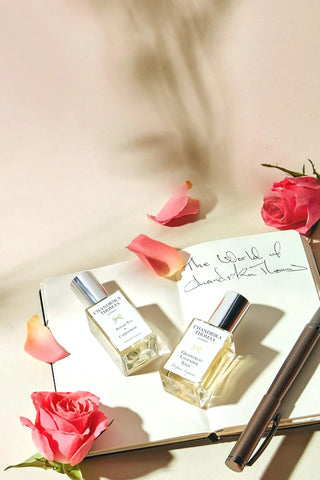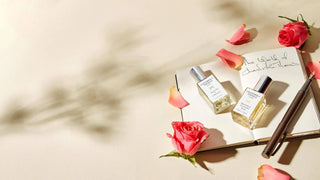Today marks National Prosecco Day, a delightful occasion that celebrates the charm and elegance of Italy’s beloved sparkling wine. For many, Prosecco conjures images of clinking glasses, gentle fizz, and shared moments of joy. It’s light, frothy, and far more forgiving than its stately cousin, Champagne. The bubbles are larger, the mood more playful, a touch less formal, yet every bit as celebratory and perhaps that’s precisely why I reach for Prosecco over Champagne. Its easy elegance feels more inviting, its cheerful sparkle more in tune with my own celebrations.
I have always appreciated the ritual of Prosecco. Not just the drink itself, but the act of preparing for it, selecting the glassware, adjusting one’s posture, and anticipating that first sip. It’s comparable to pouring tea from a proper teapot; there is ceremony in the stillness, a sense of presence that elevates the moment. One doesn’t drink Prosecco daily, and that is precisely what makes it special. It becomes a marker, a symbol of pleasure, appreciation, and the quiet act of celebrating life’s smaller victories.
For me, Prosecco has always felt glamorous. Even when sipped at home, it evokes something sparkly, not only in the glass, but in one’s spirit. The association with celebration is deeply embedded. I often find myself quietly giving thanks while enjoying a glass, and simply pausing to acknowledge the moment. There is something rather elegant about it, a mood, a memory, a mental shift.

A Conscious Transition
In recent months, however, I have found myself turning to something different, fermented sparkling fruit drinks and homemade kombucha, as a gentler, more personal alternative. This transition was not born out of necessity, but from a growing desire to create my own moments of sparkle using natural, seasonal ingredients.
What began as a modest interest in fermentation has evolved into a meaningful part of my lifestyle, one that incorporates foraging, mindfulness, and creativity. My dog, Ollie, accompanies me on these quiet outings, and more recently, my husband Peter has joined as well. We wander through local fields and hedgerows, observing the seasons and gathering what nature offers, always respectfully, always with gratitude. If a tree appears sparse, I leave it be. If the fruit is not quite ready, I wait. There is a rhythm to this practice that feels both grounding and generous.
Admittedly, I’ve had moments of overenthusiastic foraging, once picking something unfamiliar and worrying about its safety, but such instances have only deepened my awareness. I forage not for the sake of it, but for the quiet connection it fosters, to nature, to seasonality, to the present moment.

The Elegance of Fermentation
Kombucha is a naturally effervescent, fermented tea known for its tangy taste and lively character. It is made by fermenting brewed tea with sugar and a living culture known as a SCOBY, short for Symbiotic Culture of Bacteria and Yeast. This culture consumes the sugar and caffeine over time, transforming the sweet tea into a slightly sour, delicately fizzy drink.
I favour green tea as my base for its gentle flavour and natural antioxidants, though one may use black or oolong if preferred. The sugar and caffeine are not retained in the final drink in the same measure, as they are largely consumed by the fermentation process. Over the course of several days, often a week or so, the tea begins to transform. A second SCOBY forms, floating at the top like a veil, signalling that the brew has matured.
From here, I move on to the second fermentation, where the process becomes both sensory and deeply creative. I decant the kombucha into individual bottles and infuse them with seasonal ingredients, rose petals, elderflowers, wild berries, herbs, spices, or even the occasional cucumber when the hedgerows are quiet. These additions not only influence the taste, but also the fragrance, colour, and mood of the final drink.
This stage reminds me of blending perfumes, the way notes unfold, the balance of top and base, and the emotional response it evokes. Often, the combination begins in my imagination: I can smell it before I create it. The blending is intuitive, a dialogue between memory, instinct, and the rhythm of the seasons.
The result is a naturally sparkling drink that feels more than functional; it is fragrant, alive, and expressive. Not merely a beverage, but a reflection of time, place, and intention. A celebration, bottled.


Ritual and Refinement
Sipping these drinks changes something in me, not physically, but energetically. There’s a shift in how I sit, how I speak, even how I carry myself. The sparkle is subtle, yet uplifting. It reminds me of Prosecco, not in flavour but in feeling. Being naturally fermented, they hold only a small amount of alcohol, usually under 0.5% ABV, though certain homemade batches can naturally develop a little more, sometimes reaching 2–3%. Even so, they retain that special sense of celebration, turning simple moments into something quietly memorable.
Of course, I remain mindful of balance. Kombucha, like all fermented products, must be consumed in moderation. Similarly, fruit-based sparkling drinks, though nourishing and flavourful, do contain sugar. I make no extravagant claims about health benefits, though some say these drinks, with their natural ingredients, can offer a touch of goodness, such as vitamins and other nutrients. What I will say is that these drinks bring me joy, they align with my values and contribute to a more considered, creative lifestyle.

Sustainability and Seasonal Beauty
One of the aspects I cherish most about this ritual is its sustainability. I forage locally, reuse bottles, and utilise what is naturally available. You can also work with dry produce, when I’m walking past people’s houses and see dried flowers, I sometimes feel tempted to knock on their door and ask if I might have them, to prune or to make something beautiful out of them. It’s far more fun when you’ve picked it yourself. There is no need for imported ingredients or elaborate packaging. It is, quite simply, a practice rooted in appreciation of nature, of the seasons, and of what can be created with thoughtful intention.
In many ways, this process mirrors the work I do in fragrance, blending, refining, and capturing emotion through natural elements. What began as a quiet curiosity has now become a cherished rhythm in my life. I share these sparkling drinks with my family, and more often than not, I also pass along the recipes to my extended family, my customers, who appreciate not only the flavour, but the narrative behind each creation. There’s a quiet joy in pouring something you’ve crafted with your own hands, drawn from the season’s best, and infused with your own care. It carries a little of you in every sip, a memory, a mood, a moment, so it’s never just a drink, but a chapter in a shared story.

A Note for Prosecco Day
And so, on this National Prosecco Day, while many will be raising a glass of something bright and bubbly, I, too, shall raise mine, though the contents may be slightly different. I still adore Prosecco and will always keep a bottle on hand for guests. But in this season of my life, I find myself equally uplifted by the drinks I have crafted myself, effervescent, fragrant, and full of meaning.
If you’ve ever considered exploring fermentation, I wholeheartedly encourage it. The process is accessible, creative, and deeply rewarding. It offers a different kind of sparkle, one that is slow, considered, and full of grace.
Because after all, celebration need not come from tradition alone. Sometimes, it comes from the hedgerow. Sometimes, from the teapot. And sometimes, it begins in your own kitchen, with nothing more than leaves, bubbles, and a little imagination.



